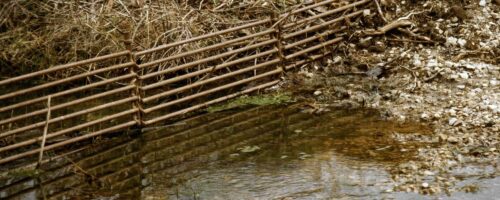The Advantages of Crossbreeding
Selecting replacement females is challenging, especially when you consider that decisions made now will impact your operation for many years. As commercial cow-calf producers evaluate the opportunity to expand, it is important to review the value of crossbreeding.
According to the January 2012 USDA Cattle Inventory report, retained heifer numbers were up 1.4 percent. This increase indicates an attempt at cattle herd expansion. However, the cost of replacement females for a cow-calf operation is significant. Selecting replacement females is challenging, especially when you consider that decisions made now will impact your operation for many years. As commercial cow-calf producers evaluate the opportunity to expand, it is important to review the value of crossbreeding.
The advantages of crossbreeding are well documented and can have a big impact on your net return. Heterosis (hybrid vigor) and breed complementarity are the primary benefits realized from a properly planned crossbreeding program. Heterosis is the increase in performance or function above what is expected based on the parents of the offspring. Breed complementarity allows a breeder to capitalize on the strengths of different breeds because no single breed excels at all of the traits that affect profitability.
Maternal Heterosis
Maternal heterosis is the advantage realized by using a crossbred cow versus a straight-bred cow. Research has shown that crossbred cows can have many advantages, including a 6 percent higher calving rate, a 4 percent higher calf survival rate, an 8 percent increase in efficiency, a 38 percent increase in longevity and a 23 percent increase in lifetime productivity. These advantages will be optimized when the breeds and individuals you select to create the crossbred cow fit your resources and goals.
Breed Complementarity
Another advantage of crossbreeding is the opportunity to capitalize on breed complementarity. This involves evaluating the strengths and weaknesses of potential breeds and selecting those that complement each other. The result should be an animal that has the best traits of those breeds. Common examples include the Black Baldie (Angus x Hereford), Brangus (Angus x Brahman) and SimAngus (Simmental x Angus), as well as many other combinations. The traits that are most important to you should be based on the goals of your operation.
Direct Heterosis
Direct heterosis is the benefit observed in a crossbred calf. On average, these advantages include a 4 percent increase in calf survival, a 5 percent increase in weaning weight and a 6 percent increase in post-weaning gain. However, these effects are greatly influenced by breed.
Breed Effects
The effect of breed on the results of a crossbreeding program can be significant. Both direct and maternal effects were estimated in a 2010 study by Williams et al., based on published crossbreeding studies. Their results showed the direct effect of breed can influence weaning weight by more than 70 pounds and post-weaning gain by more than 86 pounds. In addition, the maternal effect of breed can influence weaning weight more than 88 pounds (Table 1).

Capturing Maternal Heterosis
Perhaps the easiest way to capture maternal heterosis is to identify the type of female you desire and buy her from a reliable, off-farm source. Depending on what you are looking for, this can be difficult. In addition, replacement heifers that are known for their quality and performance will command a high price. Alternatively, many producers retain their own heifers as replacements. According to the USDA, 83 percent of replacement heifers are raised on the ranch where they will calve. Be sure that raising your own heifers makes economic sense and then develop a breeding plan that will allow you to capture heterosis.
Identify the cow type and breeds that best fit your forage resources and feed inputs. Select breeds that complement each other and are consistent with your production goals. Choose the breed or breed crosses that will produce a calf acceptable to your marketing endpoint. This process can get complicated, but doesn’t need to be. It will be much easier to maintain a crossbreeding program if it is simple. Keep in mind that considerable variability exists within breeds, and there is a big difference between maximum and optimum. Also consider associated costs like increased cow size and milk production. The optimum system to produce replacement heifers will usually result in less than optimal steer mates, and this should be considered when evaluating the economics of developing your own females.
Capturing Direct Heterosis
If you are purchasing females of unknown breeding or decide to use straight-bred females, you can still capture some of the benefits of heterosis. Identify what animal will produce the greatest profit at your marketing endpoint. For many producers, the primary variable to consider is calf weight. In the Southern Great Plains, black-and smoke-colored feeder calves will receive the highest price at auction barns. Conversely, calves with significant Brahman influence, horns or red-colored hides are often discounted. Identify the breed or breeds of bulls that will produce a desirable calf when mated to your females. Again, remember that variation exists within breeds. Select bulls that excel in the traits of economic importance to you.
The goal of most commercial cow-calf producers is to increase profitability. Determine your market endpoint and work backward to determine the type of animals that will produce the most profit within the constraints of your resources. Using crossbreeding correctly can have a significant impact on your net return.


Comment